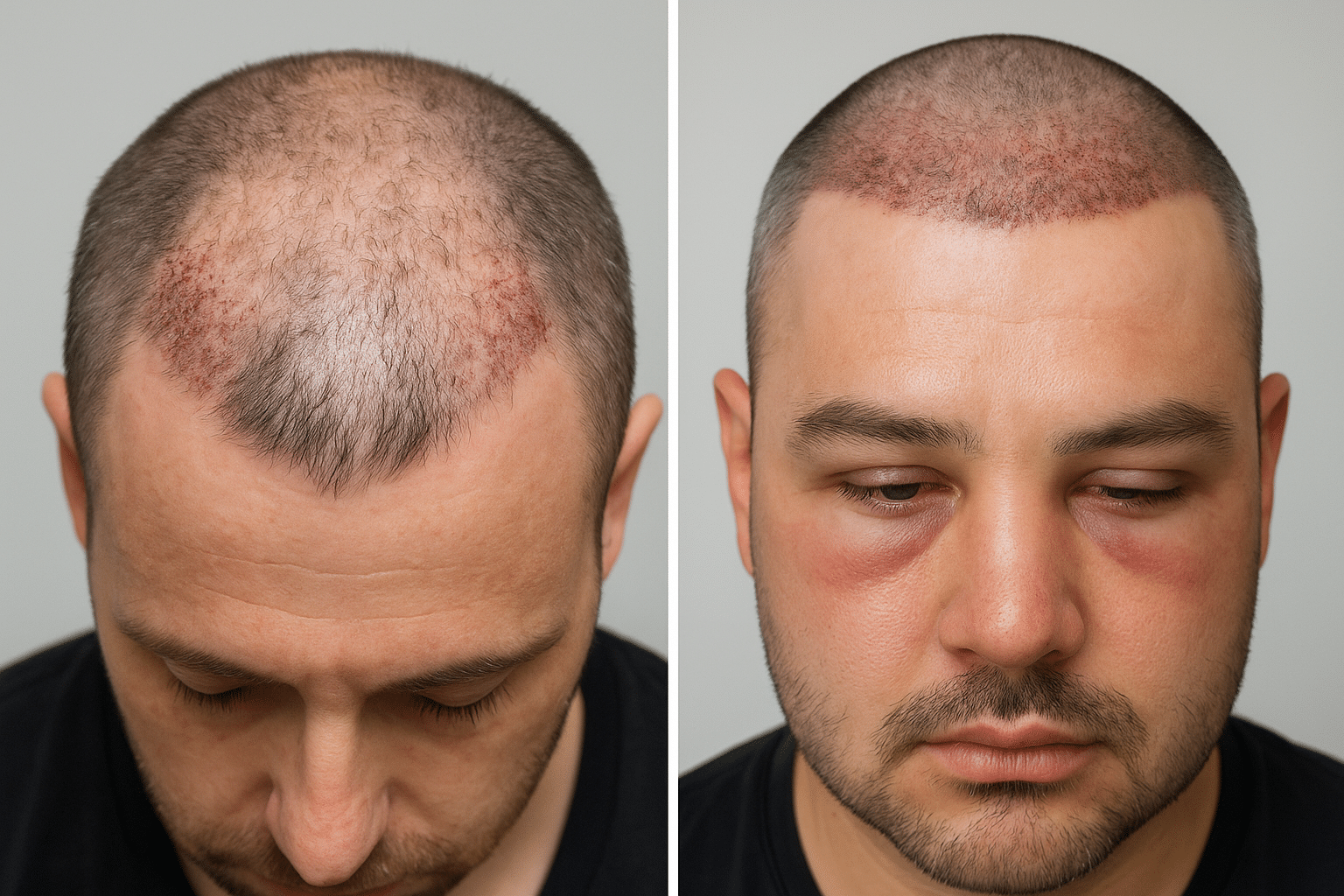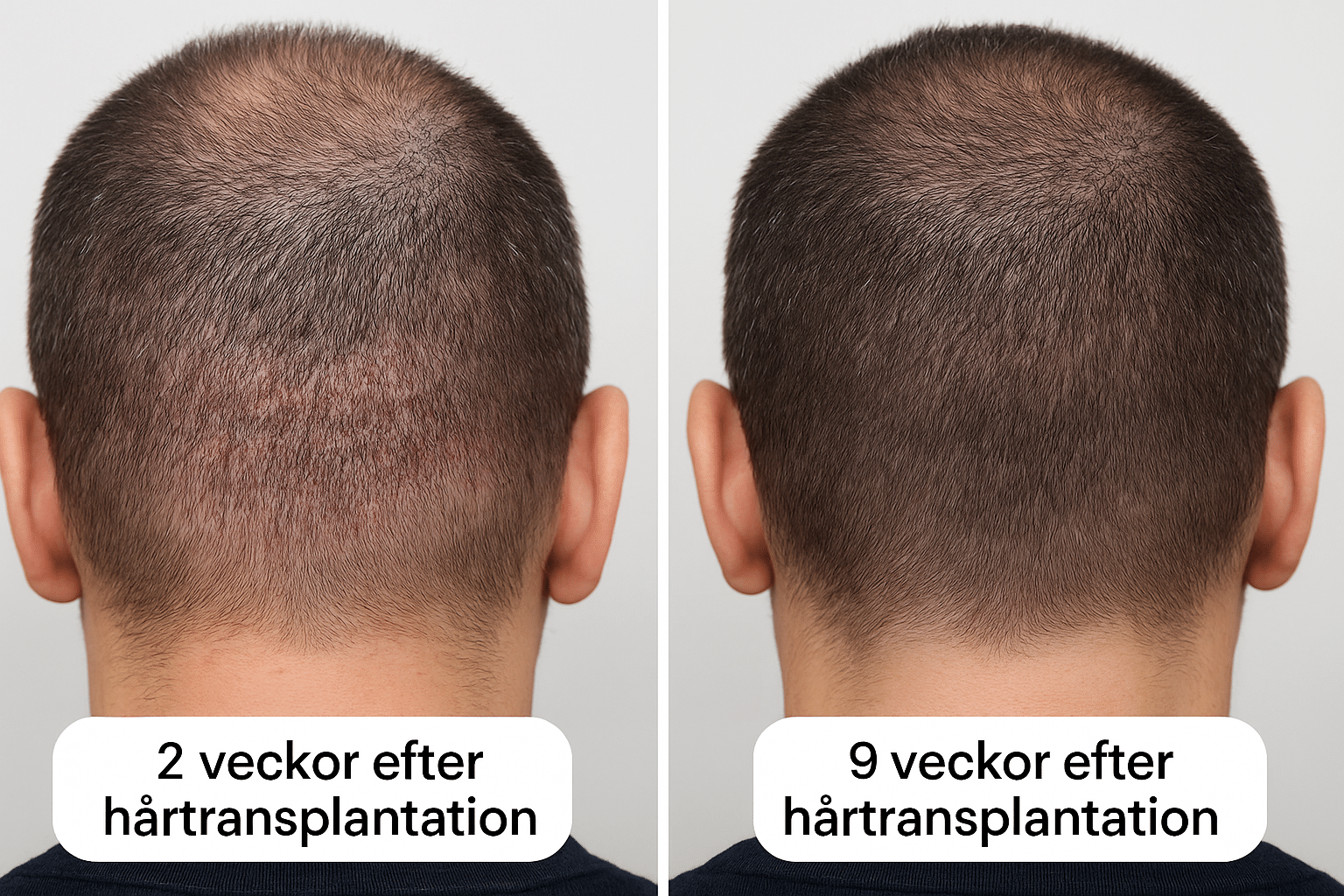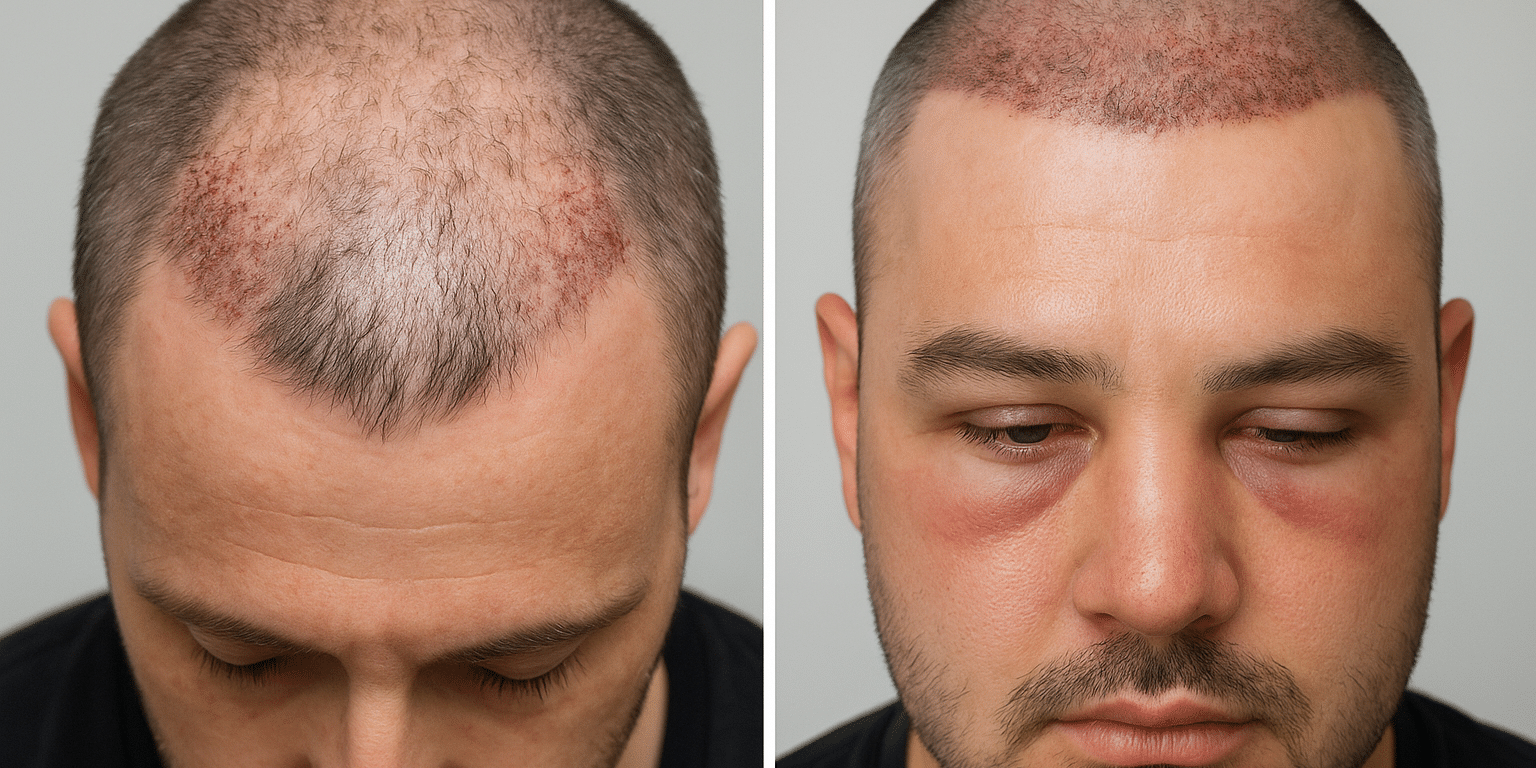What can happen after a hair transplant?
Undergoing a hair transplant is a big step for many who want to regain their hair and confidence. However, as with any medical procedure, there are certain risks and complications that you should be aware of. Here, we go through what can happen after a hair transplant, what risks exist, and how you can minimize them.

The three critical periods after the hair transplant:
After a hair transplant, there are three critical periods during which you should be especially careful to avoid complications and ensure a good result.
First two days: High risk of infection and hematoma
The first two days after the hair transplant are the most critical. During this time, the hair follicles are very sensitive, and even minimal contact can damage the implanted grafts.
Donor area: The donor area is not as sensitive and can be gently massaged and washed.
Risks: Infection and hematoma are most common during these days. Smoking, snuff, and alcohol consumption before and after the procedure increase the risk of hematoma.
Measures:
- Avoid touching the implanted area.
- Use recommended antiseptic agents when cleaning.
- Completely refrain from smoking and alcohol.
- Follow the prescribed 6-day course of antibiotics to prevent infection.
Day 3 to 8: Reduced risk but still critical
After day 3, the hair follicles begin to settle into the channels, making them less sensitive to touch.
Shower carefully: When showering, use the special spray provided and gently dab the shampoo.
Risk of infection: The risk of infection remains high, but the risk of hematoma has decreased.
Measures:
- Avoid rough movements in the implanted area.
- Continue with the recommended aftercare.
- Keep the area clean and dry.
Day 9/10 and onwards: Stable phase
By day 9 to 10, the hair follicles have stabilized and are firmly in place.
Mobility: You can now gently touch and massage the area.
Long-term care: The implanted area is still sensitive to sweat and direct sunlight for the next 4–5 weeks.

Common risks after a hair transplant
- Infection
Infection is one of the most common complications after a hair transplant. Since the procedure involves small incisions in the scalp, bacteria can enter the wounds and cause redness, swelling, and pus formation.
Measures:
- Carefully follow the clinic’s postoperative instructions.
- Take the prescribed course of antibiotics if ordered by the doctor.
- Keep the area clean and avoid touching the scalp with dirty hands.
- Bleeding
Mild bleeding immediately after the procedure is normal, but in some cases, the bleeding can be more extensive.
Measures:
- Do not touch the implanted area if it bleeds.
- Avoid physical exertion during the first few days after the procedure.
- Contact the clinic if the bleeding does not stop.
- Swelling
Swelling of the forehead and around the eyes can occur a few days after the procedure. This is usually caused by fluid injected during the operation.
Measures:
- Sleep with your head elevated to reduce swelling.
- Use cold compresses as recommended by the doctor.
- The swelling usually subsides within 3–4 days.
When should you seek help?
If you notice severe redness, pus formation, significant swelling, or fever after the procedure, contact the clinic immediately. Early intervention can prevent minor issues from developing into serious complications.
Summary
After a hair transplant, it is important to follow the aftercare instructions carefully. The first two days are the most critical, with a high risk of infection and hematoma. From day 3 to 8, the risk decreases somewhat, but caution is still necessary. From day 9 onwards, the hair follicles stabilize and the risk decreases further. By maintaining good hygiene and following the advice from your clinic, you can minimize the risks and achieve a successful result.
Free consultation
85kliniken offers a free consultation. During the consultation, you will learn more about us and our treatment method, and we will answer all your questions and explain how we can help you with your hair loss.
Our recommendation
- An important part of the healing process.
We recommend PRP treatment in conjunction with hair transplantation. PRP helps accelerate healing, speeds up the activation of transplanted hair follicles, and also seems to reduce the number of hair follicles that enter the resting phase after surgery.
What does it cost?
The exact price is determined by the scope of the treatment and whether it is combined with other treatments. Before the treatment begins, you will receive a price estimate from your practitioner or consultant.
Installment payment
If you wish to pay in installments, there are several options available:
– Medical Finance, with whom we have collaborated for a long time, offers loans up to 30,000 SEK for two years. Let Medical Finance assist you with financing your surgery.
– Human Finance, with its focus on health and care, aims to make it easier for people to get the treatment they desire.
– Lendo, helps with a great loan by gathering the best banks in one place.
We also offer interest-free installment payments.

